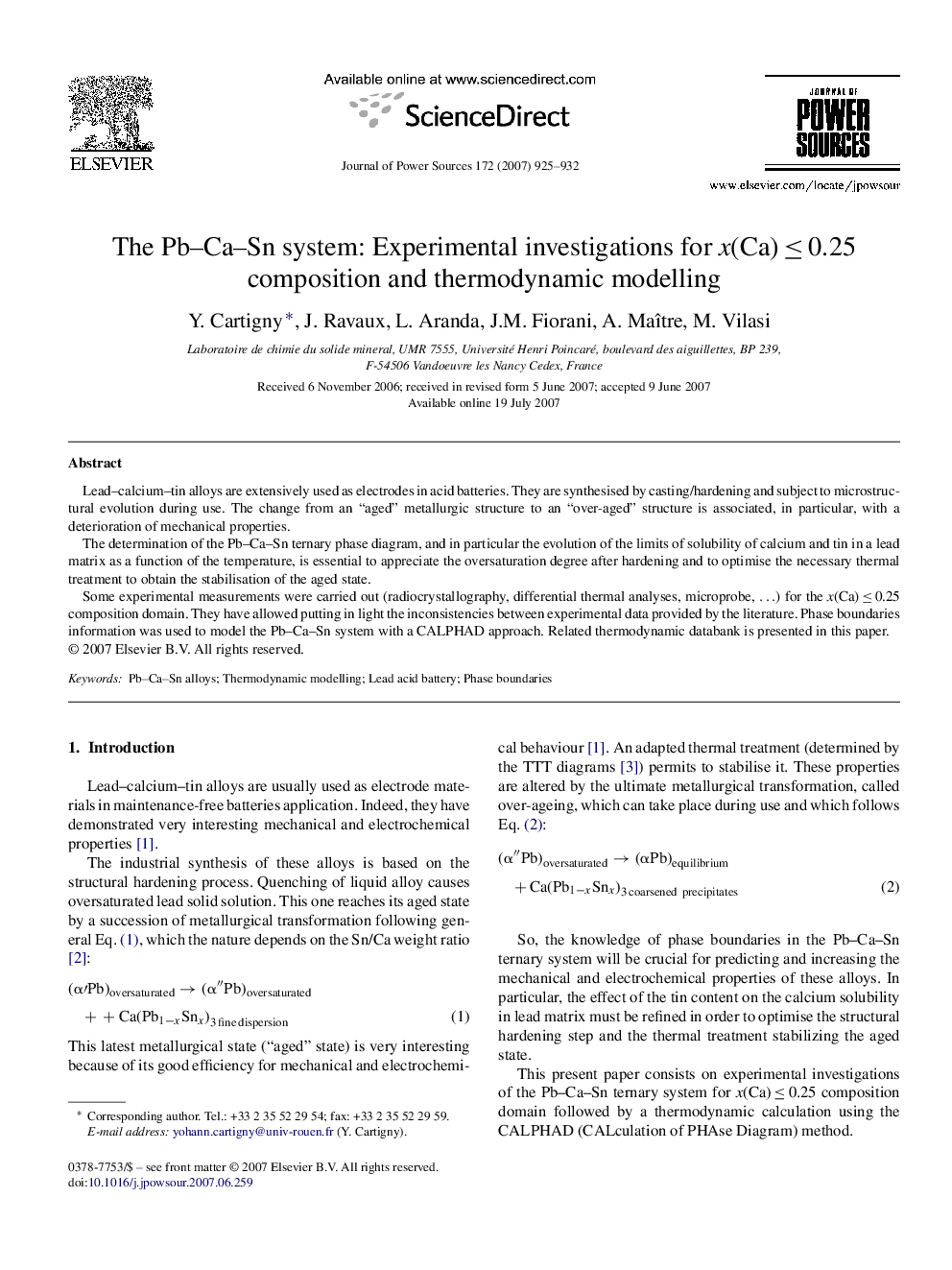| Article ID | Journal | Published Year | Pages | File Type |
|---|---|---|---|---|
| 1286219 | Journal of Power Sources | 2007 | 8 Pages |
Lead–calcium–tin alloys are extensively used as electrodes in acid batteries. They are synthesised by casting/hardening and subject to microstructural evolution during use. The change from an “aged” metallurgic structure to an “over-aged” structure is associated, in particular, with a deterioration of mechanical properties.The determination of the Pb–Ca–Sn ternary phase diagram, and in particular the evolution of the limits of solubility of calcium and tin in a lead matrix as a function of the temperature, is essential to appreciate the oversaturation degree after hardening and to optimise the necessary thermal treatment to obtain the stabilisation of the aged state.Some experimental measurements were carried out (radiocrystallography, differential thermal analyses, microprobe, …) for the x(Ca) ≤ 0.25 composition domain. They have allowed putting in light the inconsistencies between experimental data provided by the literature. Phase boundaries information was used to model the Pb–Ca–Sn system with a CALPHAD approach. Related thermodynamic databank is presented in this paper.
